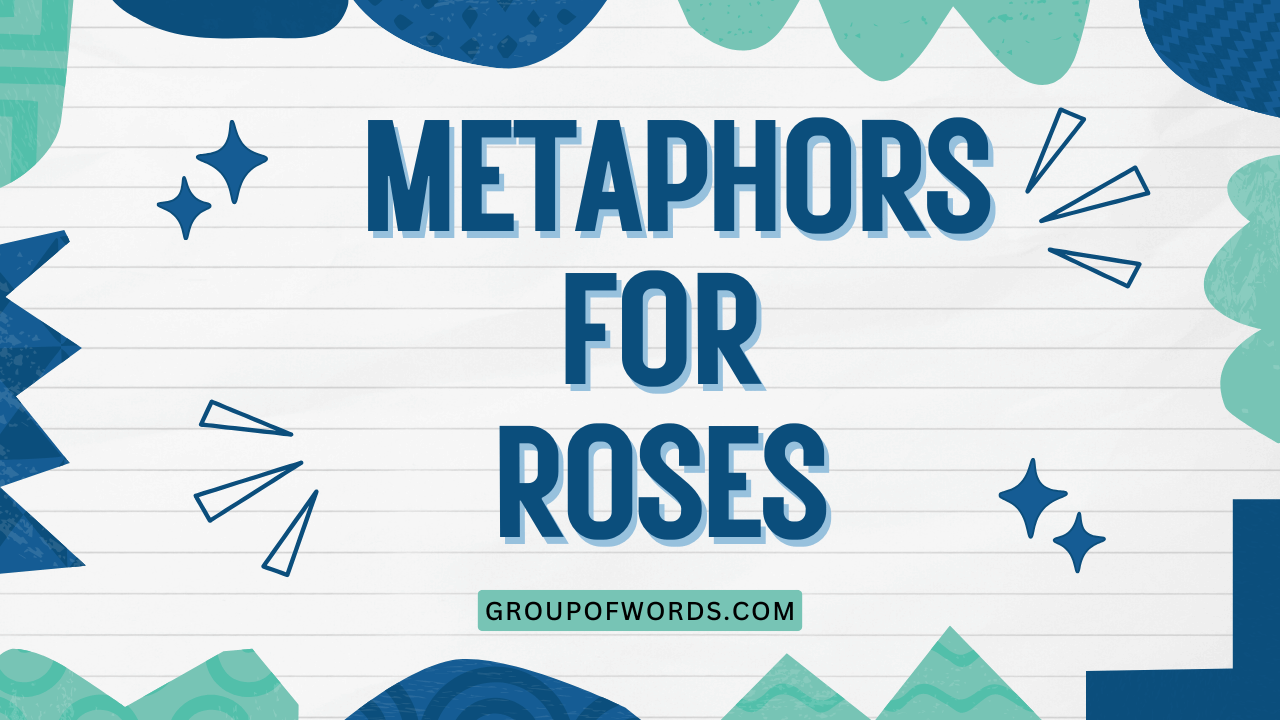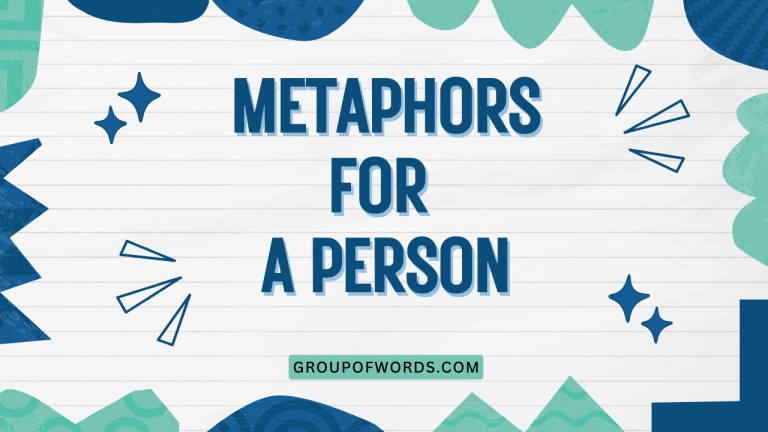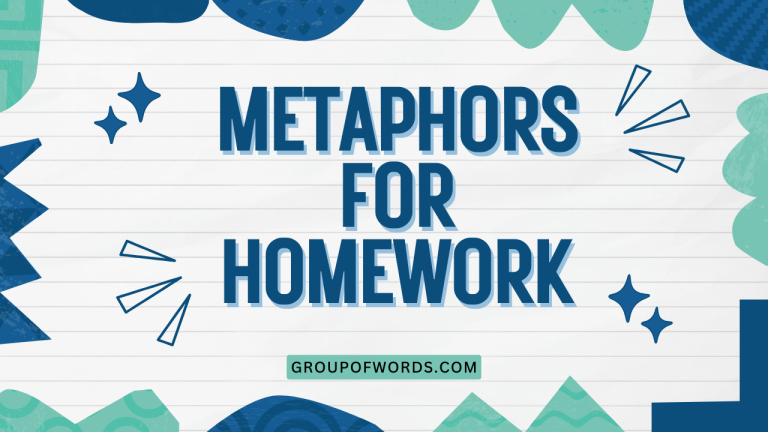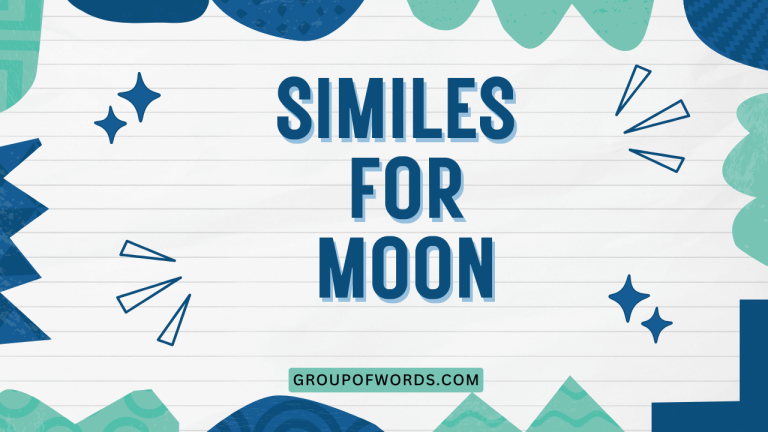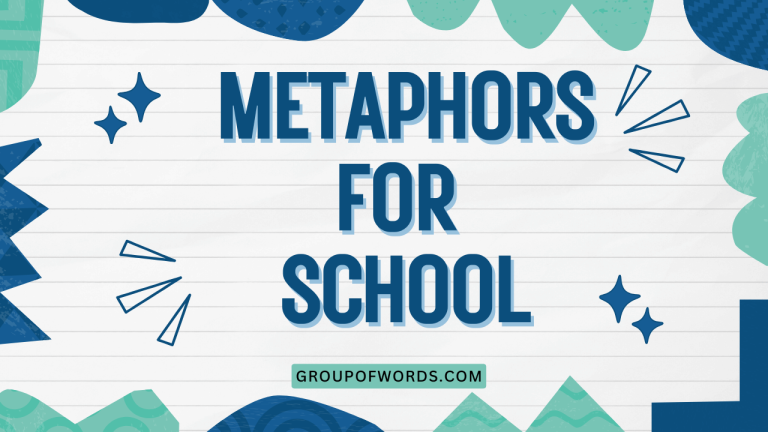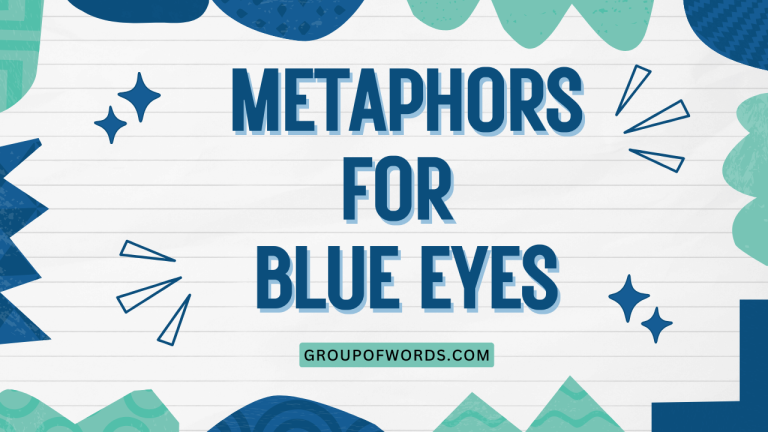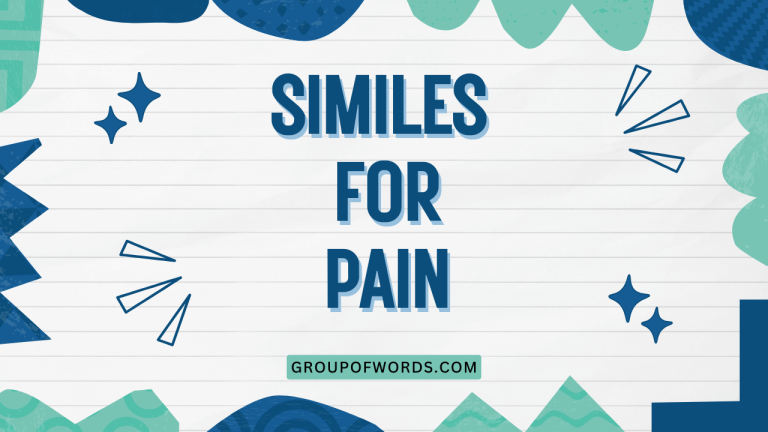Metaphors for Roses: Exploring Figurative Language
Understanding metaphors is crucial for mastering English, as they add depth and color to our language. Metaphors allow us to convey complex ideas and emotions in a vivid and relatable way.
This article delves into the world of metaphors, specifically focusing on the multifaceted symbol of the rose. Whether you’re an English language learner, a student of literature, or simply someone who appreciates the beauty of language, this guide will enhance your comprehension and creative writing skills by exploring the diverse metaphors associated with roses.
This exploration will cover definitions, structural breakdowns, diverse examples, usage rules, common mistakes, and practice exercises. By the end of this article, you’ll be able to identify, interpret, and create your own evocative metaphors using the powerful symbol of the rose.
Table of Contents
- Introduction
- Definition of Metaphor
- Structural Breakdown of Rose Metaphors
- Types of Rose Metaphors
- Examples of Rose Metaphors
- Usage Rules for Rose Metaphors
- Common Mistakes with Rose Metaphors
- Practice Exercises
- Advanced Topics
- FAQ
- Conclusion
Definition of Metaphor
A metaphor is a figure of speech that directly compares two unrelated things, stating that one thing *is* another to suggest a likeness or analogy between them. Unlike similes, which use “like” or “as” to make a comparison, metaphors imply a direct relationship, creating a more vivid and impactful image. Metaphors are essential for enriching language, adding layers of meaning, and conveying abstract concepts in a more concrete and relatable manner.
In essence, a metaphor transfers qualities from one thing to another, allowing us to understand something new or unfamiliar through the lens of something already known. For instance, saying “time is a thief” doesn’t literally mean time steals physical objects.
Instead, it suggests that time, like a thief, takes away something valuable – our opportunities and moments.
Metaphors function by creating a tenor (the subject being described) and a vehicle (the object or concept used to describe the tenor). The connection between the tenor and vehicle is the ground, the shared characteristics that make the comparison meaningful. Understanding these elements is critical for interpreting and crafting effective metaphors.
Structural Breakdown of Rose Metaphors
When analyzing metaphors involving roses, it’s helpful to break down their structure to understand how meaning is conveyed. The basic structure involves identifying the tenor (the subject being described), the vehicle (the rose), and the ground (the shared characteristics).
Let’s explore this with examples.
Consider the metaphor: “Her smile was a rose in a garden of thorns.”
- Tenor: Her smile
- Vehicle: A rose
- Ground: Beauty, radiance, and possibly a touch of vulnerability amidst a harsher environment. The thorns symbolize the difficulties or negative aspects surrounding the smile.
Another example: “The relationship blossomed like a rose.” (Note: this is technically a simile, but it highlights the metaphorical concept well.)
- Tenor: The relationship
- Vehicle: A rose
- Ground: Growth, beauty, development, and potential for love and connection. It suggests a gradual unfolding and flourishing of the relationship.
Analyzing the structure of rose metaphors helps us understand the intended meaning and appreciate the nuances of the comparison. By identifying the tenor, vehicle, and ground, we can decipher the underlying message and the emotions the metaphor aims to evoke.
Types of Rose Metaphors
Roses, with their rich symbolism, lend themselves to various types of metaphors. These can be broadly categorized based on the qualities of roses that are being emphasized.
Here are some common categories:
Beauty and Love
Roses are quintessential symbols of beauty and love. Metaphors in this category often use roses to represent idealized beauty, romantic love, passion, and affection.
These metaphors often convey feelings of admiration, adoration, and deep emotional connection.
Fragility and Transience
While roses are beautiful, they are also delicate and short-lived. Metaphors in this category highlight the fragility of beauty, the fleeting nature of youth, and the ephemeral quality of life.
They often evoke feelings of nostalgia, sadness, and the awareness of mortality.
Danger and Deception
Roses have thorns, which can inflict pain. Metaphors in this category use roses to represent hidden dangers, deceptive appearances, and the potential for pain and betrayal in love or relationships.
They suggest that beauty can be deceiving and that appearances can be misleading.
Mystery and Enchantment
The intricate petals and captivating fragrance of roses can also symbolize mystery and enchantment. Metaphors in this category use roses to represent secrets, hidden desires, and the allure of the unknown.
They often evoke feelings of curiosity, wonder, and fascination.
Growth and Potential
From a small bud to a fully bloomed flower, roses represent growth and the realization of potential. Metaphors in this category use roses to symbolize new beginnings, personal development, and the unfolding of possibilities.
They often convey feelings of hope, optimism, and the promise of a bright future.
Examples of Rose Metaphors
Here are several examples of rose metaphors, categorized by the types discussed above. These examples illustrate the diverse ways in which roses can be used to convey different meanings and emotions.
Beauty and Love Examples
This table showcases metaphors where roses represent beauty, love, and affection. Note how the rose’s inherent qualities are transferred to the subject being described.
| Metaphor | Explanation |
|---|---|
| Her heart was a rose, blooming with love. | Her heart is full of love, like a rose in full bloom. |
| He saw her as the rose of his life. | She is the most beautiful and beloved person in his life. |
| Their love was a crimson rose. | Their love was passionate and intense, like a red rose. |
| She was a rose among thorns. | She stood out as beautiful and virtuous in a difficult environment. |
| His words were roses, gently caressing her soul. | His words were kind, beautiful, and comforting. |
| The bride was a radiant rose on her wedding day. | The bride was beautiful and glowing with happiness. |
| Their romance blossomed like a rose garden. | Their romance grew beautifully and abundantly. |
| His affection for her was a bouquet of roses. | He expressed his love through many acts of kindness and affection. |
| She was the rose in his buttonhole, his pride and joy. | She was someone he cherished and was proud to be with. |
| Their first kiss was like the scent of roses. | Their first kiss was sweet, memorable, and filled with romance. |
| Her beauty was a rose, intoxicating and captivating. | Her beauty was overwhelming and enchanting. |
| He treated her like a delicate rose, with utmost care. | He treated her with gentleness and respect. |
| Their love story was a rose-tinted dream. | Their love story was idealized and perfect. |
| Her laughter was like the petals of a rose, soft and sweet. | Her laughter was gentle and pleasant to hear. |
| He offered her a rose, a symbol of his devotion. | He gave her a rose as a gesture of his deep love and commitment. |
| She nurtured their relationship like a rose garden. | She cared for their relationship with great attention and effort. |
| His love for her was a rose that never faded. | His love remained strong and constant over time. |
| She wore a rose in her hair, an emblem of her beauty. | The rose highlighted and enhanced her natural beauty. |
| Their love was a rose, fragrant and full of life. | Their love was vibrant, sweet, and enriching. |
| She was his rose, his everything. | She was the most important person in his life. |
Fragility and Transience Examples
This table presents metaphors highlighting the rose’s fragility and the ephemeral nature of beauty and life. The rose’s delicate nature is used to symbolize vulnerability and transience.
| Metaphor | Explanation |
|---|---|
| Her youth was a rose, quickly fading. | Her youth was beautiful but didn’t last long. |
| Life is a rose, easily crushed. | Life is fragile and can be easily damaged or destroyed. |
| Their love was a rose in winter. | Their love was struggling to survive in difficult circumstances. |
| Her dreams were roses, wilting in the sun. | Her dreams were fading and losing their appeal. |
| Memories are roses, their scent lingering but petals falling. | Memories are pleasant but eventually fade with time. |
| His hope was a fragile rose. | His hope was delicate and easily broken. |
| Beauty is a rose, its bloom short-lived. | Beauty is transient and doesn’t last forever. |
| Their relationship was a rose without water. | Their relationship was neglected and suffering. |
| She held her heart like a delicate rose. | She guarded her emotions carefully because they were easily hurt. |
| His smile was a rose, only blooming briefly. | His smile was rare and didn’t last long. |
| Her innocence was a rose, vulnerable to the world. | Her innocence was easily corrupted or exploited. |
| Life’s joys are roses, soon to wither. | Joyful moments are fleeting and eventually pass. |
| Their happiness was a rose, threatened by thorns. | Their happiness was precarious and at risk of being ruined. |
| Her spirit was a rose, easily bruised. | Her spirit was sensitive and easily hurt by criticism or negativity. |
| His promise was a rose, quickly forgotten. | His promise was unreliable and soon broken. |
| Her dreams were roses, scattered by the wind. | Her dreams were lost or unattainable. |
| Their love was a rose, fading with the seasons. | Their love diminished as time passed. |
| Her tears were like dew on a rose, beautiful but fleeting. | Her tears were poignant but didn’t last long. |
| His kindness was a rose, rare and precious. | His kindness was exceptional but not always present. |
| She treasured each moment like a rose, knowing it wouldn’t last. | She valued each moment because she knew it was temporary. |
Danger and Deception Examples
This table illustrates metaphors where roses represent danger, deception, and hidden threats. The thorns of the rose become a symbol of potential harm and betrayal.
| Metaphor | Explanation |
|---|---|
| Her beauty was a rose with hidden thorns. | Her beauty concealed a dangerous or manipulative personality. |
| Love is a rose, but beware of the thorns. | Love is beautiful but can also be painful. |
| Their friendship was a rose concealing a viper. | Their friendship appeared genuine but hid treachery. |
| His words were roses, laced with poison. | His words sounded kind but were intended to harm. |
| The deal was a rose, hiding sharp thorns beneath. | The deal seemed attractive but contained hidden risks. |
| Her smile was a rose, masking her true intentions. | Her smile hid her real feelings or motives. |
| Politics is a rose garden of hidden thorns. | Politics appears appealing but is full of dangers and conflicts. |
| Their relationship was a rose bush, beautiful but thorny. | Their relationship was attractive but also challenging and painful. |
| She offered him a rose, a trap disguised as a gift. | She presented something that seemed desirable but was actually harmful. |
| His promises were roses, concealing his lies. | His promises sounded good but were deceptive. |
| Her charm was a rose, hiding her cruel nature. | Her charm masked her unkind and ruthless personality. |
| The city was a rose, beautiful but full of dangers. | The city was attractive but also had hidden threats and risks. |
| Their love was a rose, its thorns drawing blood. | Their love was intense but caused pain and suffering. |
| His compliments were roses, concealing his criticism. | His compliments masked his underlying disapproval. |
| Her allure was a rose, tempting him towards danger. | Her attractiveness led him into a risky situation. |
| The opportunity was a rose, hiding unexpected challenges. | The opportunity seemed promising but presented unforeseen difficulties. |
| Their truce was a rose, fragile and easily broken. | Their peace was unstable and could easily be disrupted. |
| Her secrets were roses, carefully guarded by thorns. | Her secrets were protected by her defensive behavior. |
| His flattery was a rose, masking his ulterior motives. | His praise hid his selfish intentions. |
| She presented herself as a rose, hiding her true self. | She concealed her real personality behind a facade of beauty. |
Mystery and Enchantment Examples
| Metaphor | Explanation |
|---|---|
| Her thoughts were a rose garden, full of hidden paths. | Her thoughts were complex and mysterious. |
| The secret was a rose, its petals slowly unfolding. | The secret was gradually being revealed. |
| Their love was a black rose, dark and enigmatic. | Their love was mysterious and unconventional. |
| Her gaze was a rose, drawing him into its depths. | Her gaze was captivating and mesmerizing. |
| The legend was a rose, its story rich and layered. | The legend was complex and captivating. |
| Her dreams were roses, blooming in the twilight. | Her dreams were surreal and enchanting. |
| His words were roses, casting a spell on her. | His words were charming and persuasive. |
| The night was a rose, its darkness alluring. | The night was mysterious and enchanting. |
| Her silence was a rose, its beauty unspoken. | Her silence was intriguing and expressive. |
| Their connection was a rose, its roots deep and hidden. | Their bond was profound and mysterious. |
| Her spirit was a rose, forever blooming in mystery. | Her spirit was eternally enigmatic and captivating. |
| His laughter was a rose, echoing with secrets. | His laughter was intriguing and suggested hidden knowledge. |
| The forest was a rose garden, filled with enchanting wonders. | The forest was magical and full of surprises. |
| The path ahead was a rose, its destination unknown. | The future was uncertain and full of possibilities. |
| Her heart was a rose, its chambers filled with wonder. | Her heart was full of curiosity and amazement. |
| Their meeting was a rose, a chance encounter with destiny. | Their meeting was fated and significant. |
| The poem was a rose, its verses unfolding with enchantment. | The poem was captivating and beautifully written. |
| Her presence was a rose, its aura captivating and mysterious. | Her presence was alluring and enigmatic. |
| His absence was a rose, its beauty missed and longed for. | His absence was deeply felt and missed. |
| The journey was a rose, its experiences enriching and profound. | The journey was transformative and meaningful. |
Growth and Potential Examples
| Metaphor | Explanation |
|---|---|
| Her potential was a rosebud, waiting to bloom. | She had untapped potential that was ready to be developed. |
| Their relationship was a rose, growing stronger each day. | Their relationship was developing and becoming more resilient. |
| His dreams were roses, cultivated with care and dedication. | His dreams were nurtured with effort and commitment. |
| Her skills were roses, blossoming with practice. | Her abilities were improving through dedication and training. |
| The project was a rose, its development a labor of love. | The project was nurtured with passion and dedication. |
| Her confidence was a rose, growing taller with each success. | Her self-assurance was increasing with every achievement. |
| His ideas were roses, spreading their fragrance of innovation. | His ideas were creative and influential. |
| The community was a rose garden, flourishing with diversity. | The community was thriving due to its varied members and cultures. |
| Her spirit was a rose, resilient and always striving upwards. | Her spirit was strong and determined to overcome challenges. |
| His efforts were roses, contributing to a beautiful outcome. | His hard work resulted in a positive and rewarding result. |
| Her knowledge was a rose, its petals expanding with each new discovery. | Her understanding was growing with every new piece of information. |
| His leadership was a rose, guiding and inspiring others. | His leadership was effective and motivating. |
| The company was a rose, its growth a testament to perseverance. | The company’s success was a result of hard work and determination. |
| Her creativity was a rose, blooming with unique expressions. | Her artistic talent was original and flourishing. |
| His determination was a rose, pushing through obstacles with strength. | His resolve helped him overcome challenges. |
| Their collaboration was a rose, its beauty a result of teamwork. | Their joint effort produced something remarkable. |
| The movement was a rose, its message spreading and inspiring change. | The movement’s influence was growing and motivating others. |
| Her vision was a rose, shaping a brighter future. | Her foresight was creating positive change. |
| His passion was a rose, fueling his dedication and drive. | His enthusiasm motivated his commitment and ambition. |
| The project was a rose, its success a testament to hard work. | The project’s achievement was a result of dedicated effort. |
Usage Rules for Rose Metaphors
When using rose metaphors, it’s crucial to ensure clarity and relevance. Here are some guidelines:
- Ensure Relevance: The connection between the rose and the subject being described should be clear and logical. The shared characteristics (the ground) should be easily understood.
- Avoid Clichés: While some rose metaphors are common (e.g., “a rose among thorns”), try to create original and imaginative comparisons to avoid sounding trite.
- Consider Context: The context in which the metaphor is used can significantly affect its meaning. Be mindful of the tone and audience when choosing a metaphor.
- Maintain Consistency: Once you establish a metaphor, maintain consistency throughout your writing. Avoid mixing metaphors or abruptly changing the comparison.
- Use Sparingly: Overusing metaphors can weaken their impact. Use them judiciously to enhance your writing without overwhelming the reader.
For example, instead of saying “She was as beautiful as a rose” (a simile), try “She was a rose, her beauty captivating all who beheld her.” This metaphor is more direct and impactful.
Common Mistakes with Rose Metaphors
Here are some common mistakes to avoid when using rose metaphors:
| Incorrect | Correct | Explanation |
|---|---|---|
| “The stock market is a rose, but it also flies high.” | “The stock market is a rose garden, beautiful but full of hidden thorns.” | Mixing metaphors (rose and flying high) creates confusion. |
| “He was like a rose.” | “He was a rose, his kindness blooming in every interaction.” | Using “like” makes it a simile, not a metaphor. |
| “The rose was like her heart.” | “Her heart was a rose, fragile and beautiful.” | The tenor and vehicle are reversed, weakening the metaphor. |
| “The rose is good.” | “Her spirit was a rose, strong and resilient even in adversity.” | Lacking a clear connection between the rose and the subject makes the metaphor weak. |
| “She was a rose, a car, and a star.” | “She was a rose, her beauty radiating like the sun.” | Using too many unrelated metaphors dilutes the impact. |
Practice Exercises
Test your understanding of rose metaphors with these exercises. Identify the tenor, vehicle, and ground in each example, or create your own metaphors based on the given themes.
-
Question: Identify the tenor, vehicle, and ground in the metaphor: “Her tears were dew on a rose.”
Answer: Tenor: Her tears; Vehicle: Dew on a rose; Ground: Beauty, fragility, transience. -
Question: Create a metaphor using a rose to describe a challenging situation.
Answer: The project was a rose bush, beautiful but full of thorns that pricked our fingers at every turn. -
Question: Identify the metaphor in the sentence: “His love for her was a rose that never faded.”
Answer: His love for her was a rose. -
Question: What does the metaphor “She was a rose among thorns” mean?
Answer: She was beautiful and virtuous in a difficult or harsh environment. -
Question: Identify the tenor, vehicle, and ground in the metaphor: “His words were roses, laced with poison.”
Answer: Tenor: His words; Vehicle: Roses; Ground: Deception, hidden harm. -
Question: Create a metaphor using a rose to describe a person’s potential.
Answer: Her potential was a rosebud, waiting for the right conditions to bloom into its full glory. -
Question: What does the metaphor “Life is a rose, easily crushed” suggest?
Answer: Life is fragile and can be easily damaged or destroyed by unforeseen circumstances. -
Question: Identify the metaphor: “Their friendship was a rose concealing a viper.”
Answer: Their friendship was a rose. -
Question: Create a metaphor using a rose to describe a mysterious person.
Answer: She was a black rose, her secrets hidden beneath layers of enigmatic beauty. -
Question: What does the metaphor “Her youth was a rose, quickly fading” imply?
Answer: Her youth was beautiful but transient and didn’t last long.
Advanced Topics
For advanced learners, consider exploring extended metaphors, where the comparison between the rose and the subject is sustained throughout a longer passage or poem. Analyze how poets and writers use rose imagery to create complex and layered meanings.
Research the cultural and historical significance of roses in literature and art. Another area to explore is the use of symbolism in conjunction with metaphors.
For example, what does the color of the rose add to the meaning of the metaphor? A red rose often symbolizes passionate love, while a white rose can symbolize purity or innocence.
Consider the impact of these symbolic associations on the overall metaphor.
Consider the following excerpt from Robert Burns’ “A Red, Red Rose”:
O my Luve is like a red, red rose
That’s newly sprung in June;
O my Luve is like the melodie
That’s sweetly play’d in tune.
Here, the red rose symbolizes passionate, youthful love, and the metaphor is extended throughout the poem to convey the speaker’s deep affection.
FAQ
-
Question: What is the difference between a metaphor and a simile?
Answer: A metaphor directly compares two things by stating that one *is* the other, while a simile uses “like” or “as” to make a comparison. For example, “He is a lion” (metaphor) versus “He is like a lion” (simile). -
Question: How can I create more original rose metaphors?
Answer: Think beyond the common associations of roses with beauty and love. Consider the other aspects of roses, such as their thorns, fragrance, growth cycle, and cultural significance. Combine these elements in unexpected ways to create fresh and imaginative comparisons. -
Question: Can a rose metaphor be negative?
Answer: Yes, absolutely. Roses can symbolize danger, deception, and fragility. A metaphor like “Her charm was a rose, hiding her cruel nature” illustrates a negative connotation. -
Question: How do I identify the tenor, vehicle, and ground in a metaphor?
Answer: The tenor is the subject being described, the vehicle is the object or concept used to describe the tenor (in this case, the rose), and the ground is the shared characteristics that make the comparison meaningful. Ask yourself: What qualities of the rose are being transferred to the subject? -
Question: What is an extended metaphor?
Answer: An extended metaphor is a metaphor that is developed over several lines, sentences, or even an entire work. It sustains the comparison between the tenor and vehicle throughout, adding depth and complexity to the meaning. -
Question: How does the color of the rose affect the metaphor?
Answer: The color of the rose adds another layer of meaning. Red roses often symbolize passionate love, white roses symbolize purity, yellow roses symbolize friendship, and black roses can symbolize death or mourning. These colors enhance the metaphor’s emotional impact. -
Question: Can I use rose metaphors in everyday conversation?
Answer: Yes, but use them judiciously. Overusing metaphors can sound affected or unnatural. Use them when you want to add emphasis, color, or depth to your communication. -
Question: How do I avoid clichés when using rose metaphors?
Answer: Try to think of unique and unexpected ways to connect the rose to the subject you’re describing. Focus on specific details and sensory experiences related to roses, such as their texture, scent, or the feeling of being pricked by their thorns.
Conclusion
Mastering metaphors, particularly those involving roses, enhances your ability to express complex ideas and emotions with vivid imagery. Understanding the structure, types, and usage rules of rose metaphors allows you to create compelling and meaningful comparisons.
By avoiding common mistakes and practicing regularly, you can refine your metaphorical skills and add depth and richness to your writing and communication.
Remember that metaphors are powerful tools for conveying abstract concepts in a relatable way. Don’t be afraid to experiment with different combinations and explore the diverse symbolism associated with roses.
The more you practice, the more confident you’ll become in using metaphors to enrich your language and express yourself with greater clarity and creativity.
Continue to explore the world of figurative language, and you’ll find that your ability to understand and appreciate literature and communication will grow exponentially. Happy writing!
